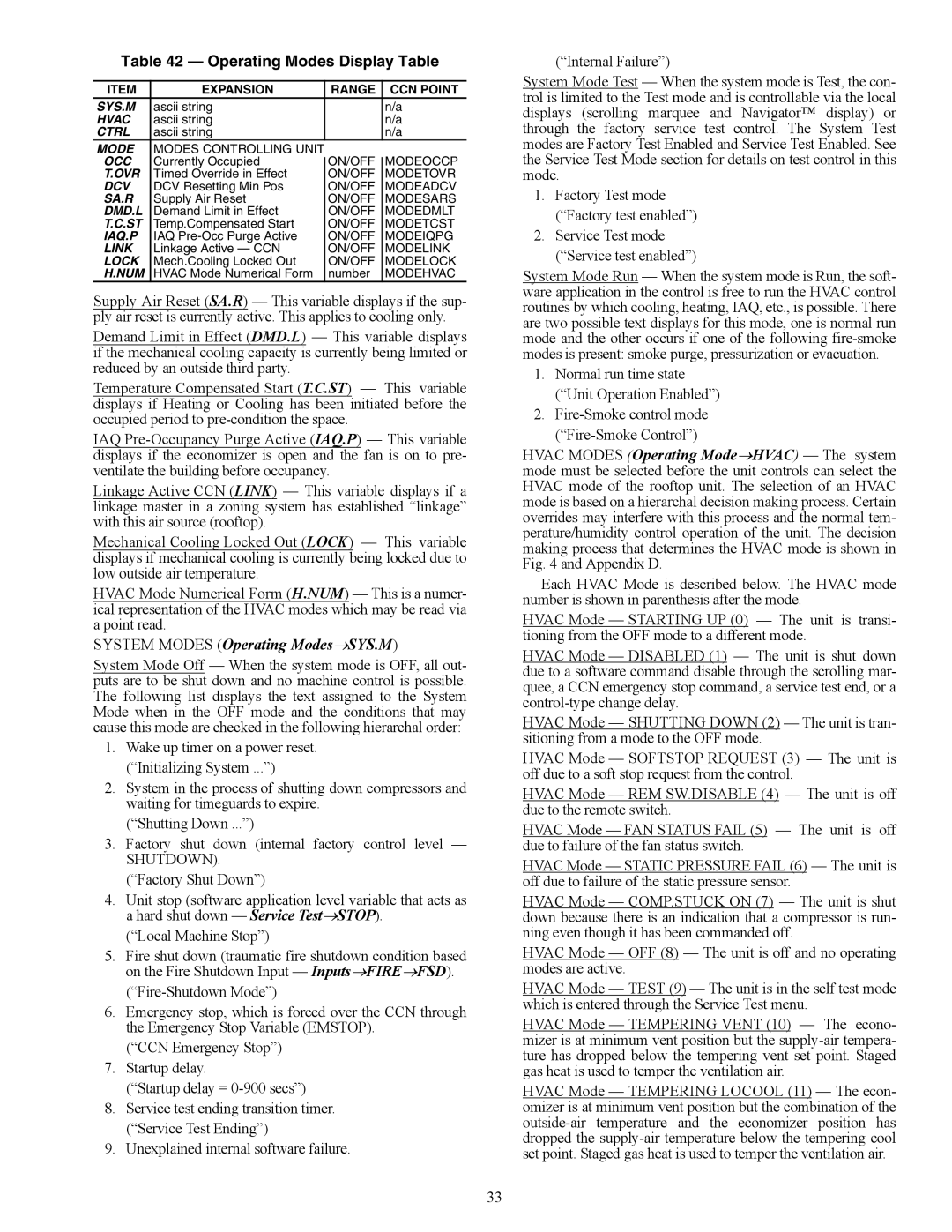Table 42 — Operating Modes Display Table
ITEM | EXPANSION |
| RANGE |
| CCN POINT |
SYS.M | ascii string |
|
|
| n/a |
HVAC | ascii string |
|
|
| n/a |
CTRL | ascii string |
|
|
| n/a |
MODE | MODES CONTROLLING UNIT |
|
|
| |
OCC | Currently Occupied |
| ON/OFF |
| MODEOCCP |
|
| ||||
T.OVR | Timed Override in Effect |
| ON/OFF |
| MODETOVR |
DCV | DCV Resetting Min Pos |
| ON/OFF |
| MODEADCV |
SA.R | Supply Air Reset |
| ON/OFF |
| MODESARS |
DMD.L | Demand Limit in Effect |
| ON/OFF |
| MODEDMLT |
T.C.ST | Temp.Compensated Start |
| ON/OFF |
| MODETCST |
IAQ.P | IAQ |
| ON/OFF |
| MODEIQPG |
LINK | Linkage Active — CCN |
| ON/OFF |
| MODELINK |
LOCK | Mech.Cooling Locked Out |
| ON/OFF |
| MODELOCK |
H.NUM | HVAC Mode Numerical Form |
| number |
| MODEHVAC |
Supply Air Reset (SA.R) — This variable displays if the sup- ply air reset is currently active. This applies to cooling only.
Demand Limit in Effect (DMD.L) — This variable displays if the mechanical cooling capacity is currently being limited or reduced by an outside third party.
Temperature Compensated Start (T.C.ST) — This variable displays if Heating or Cooling has been initiated before the occupied period to
IAQ
Linkage Active CCN (LINK) — This variable displays if a linkage master in a zoning system has established “linkage” with this air source (rooftop).
Mechanical Cooling Locked Out (LOCK) — This variable displays if mechanical cooling is currently being locked due to low outside air temperature.
HVAC Mode Numerical Form (H.NUM) — This is a numer- ical representation of the HVAC modes which may be read via a point read.
SYSTEM MODES (Operating Modes→SYS.M)
System Mode Off — When the system mode is OFF, all out- puts are to be shut down and no machine control is possible. The following list displays the text assigned to the System Mode when in the OFF mode and the conditions that may cause this mode are checked in the following hierarchal order:
1.Wake up timer on a power reset. (“Initializing System ...”)
2.System in the process of shutting down compressors and waiting for timeguards to expire.
(“Shutting Down ...”)
3.Factory shut down (internal factory control level — SHUTDOWN).
(“Factory Shut Down”)
4.Unit stop (software application level variable that acts as a hard shut down — Service Test→STOP).
(“Local Machine Stop”)
5.Fire shut down (traumatic fire shutdown condition based on the Fire Shutdown Input — Inputs→FIRE→FSD).
6.Emergency stop, which is forced over the CCN through the Emergency Stop Variable (EMSTOP).
(“CCN Emergency Stop”)
7.Startup delay.
(“Startup delay =
8.Service test ending transition timer. (“Service Test Ending”)
9.Unexplained internal software failure.
(“Internal Failure”)
System Mode Test — When the system mode is Test, the con- trol is limited to the Test mode and is controllable via the local displays (scrolling marquee and Navigator™ display) or through the factory service test control. The System Test modes are Factory Test Enabled and Service Test Enabled. See the Service Test Mode section for details on test control in this mode.
1.Factory Test mode (“Factory test enabled”)
2.Service Test mode (“Service test enabled”)
System Mode Run — When the system mode is Run, the soft- ware application in the control is free to run the HVAC control routines by which cooling, heating, IAQ, etc., is possible. There are two possible text displays for this mode, one is normal run mode and the other occurs if one of the following
1.Normal run time state (“Unit Operation Enabled”)
2.
HVAC MODES (Operating Mode→HVAC) — The system mode must be selected before the unit controls can select the HVAC mode of the rooftop unit. The selection of an HVAC mode is based on a hierarchal decision making process. Certain overrides may interfere with this process and the normal tem- perature/humidity control operation of the unit. The decision making process that determines the HVAC mode is shown in Fig. 4 and Appendix D.
Each HVAC Mode is described below. The HVAC mode number is shown in parenthesis after the mode.
HVAC Mode — STARTING UP (0) — The unit is transi- tioning from the OFF mode to a different mode.
HVAC Mode — DISABLED (1) — The unit is shut down due to a software command disable through the scrolling mar- quee, a CCN emergency stop command, a service test end, or a
HVAC Mode — SHUTTING DOWN (2) — The unit is tran- sitioning from a mode to the OFF mode.
HVAC Mode — SOFTSTOP REQUEST (3) — The unit is off due to a soft stop request from the control.
HVAC Mode — REM SW.DISABLE (4) — The unit is off due to the remote switch.
HVAC Mode — FAN STATUS FAIL (5) — The unit is off due to failure of the fan status switch.
HVAC Mode — STATIC PRESSURE FAIL (6) — The unit is off due to failure of the static pressure sensor.
HVAC Mode — COMP.STUCK ON (7) — The unit is shut down because there is an indication that a compressor is run- ning even though it has been commanded off.
HVAC Mode — OFF (8) — The unit is off and no operating modes are active.
HVAC Mode — TEST (9) — The unit is in the self test mode which is entered through the Service Test menu.
HVAC Mode — TEMPERING VENT (10) — The econo- mizer is at minimum vent position but the
HVAC Mode — TEMPERING LOCOOL (11) — The econ- omizer is at minimum vent position but the combination of the
33
